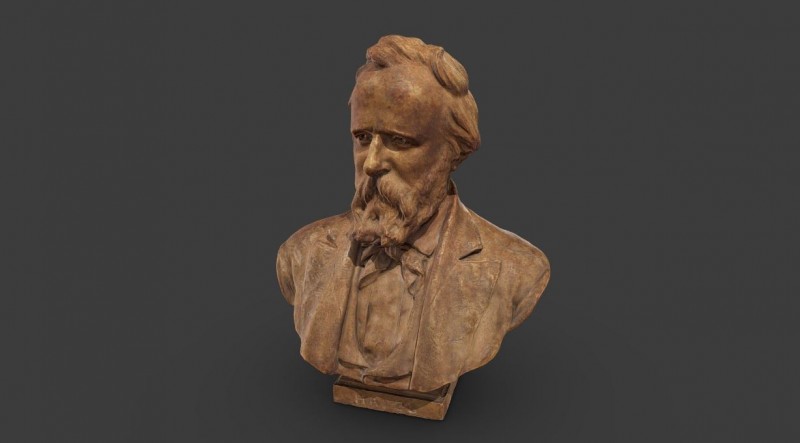
Atoms, the building blocks of matter, have been a subject of fascination for scientists for centuries. Over time, our understanding of the atom has evolved, and two significant models have played pivotal roles in shaping our knowledge: Rutherford's Nuclear Model and Quantum Mechanics. In this article, we will explore the historical development of these models, their fundamental principles, and their impact on our comprehension of atomic structure.
Rutherford's Nuclear Model: The Discovery of the Nucleus
In the early 20th century, Ernest Rutherford conducted the groundbreaking Gold Foil Experiment, which led to the formulation of the Rutherford Nuclear Model. In this experiment, alpha particles were fired at a thin gold foil. Rutherford's model proposed that the atom consists of a tiny, dense, and positively charged nucleus at its center, while the electrons orbit around it like planets around the sun. This discovery shattered the previously held "plum pudding" model and provided new insights into the nature of atomic structure.
Bohr's Quantum Model: Electrons and Energy Levels
Niels Bohr, building upon Rutherford's model, introduced the concept of quantization of energy levels in his Quantum Model. According to Bohr's postulates, electrons can only occupy specific energy levels or orbits around the nucleus, and they emit or absorb energy in discrete quanta. This explained the stability of atoms and the spectral lines observed in emission and absorption spectra.
Wave-Particle Duality: The Birth of Quantum Mechanics
As scientists delved deeper into the behavior of subatomic particles, they encountered a fundamental paradox. The Double-Slit Experiment, among others, revealed that particles like electrons exhibit both wave-like and particle-like properties. This marked the beginning of Quantum Mechanics, where the behavior of particles is described using probability wavefunctions rather than deterministic trajectories.
Schrödinger's Quantum Model: The Quantum Wavefunction
Erwin Schrödinger's wave equation further advanced Quantum Mechanics. The wavefunction describes the probability distribution of finding an electron in a particular region around the nucleus. Quantum numbers and electron orbitals emerged as tools to understand the spatial distribution and energy levels of electrons.
The Modern Atomic Model: The Electron Cloud
With the development of Quantum Mechanics, the notion of definite orbits for electrons was replaced by the concept of electron orbitals. The electron cloud represents the region where an electron is likely to be found, with varying probabilities at different distances from the nucleus. This model replaced Bohr's fixed-energy orbits and laid the foundation for predicting atomic behavior more accurately.
Understanding Subatomic Particles: Protons, Neutrons, and Electrons
The atomic nucleus is composed of protons and neutrons, which are held together by the strong nuclear force. Protons carry a positive charge, neutrons are electrically neutral, and both contribute to the atom's mass. Electrons, with a negative charge, orbit the nucleus in distinct energy levels.
The Strong Nuclear Force and Binding Energy
The nucleus is the central core of the atom, and it is held together by the strong nuclear force. This force overcomes the electrostatic repulsion between positively charged protons, keeping the nucleus stable. The energy required to disassemble the nucleus is known as binding energy.
The Atom in Chemical Reactions: Valence Electrons
Chemical reactions involve interactions between atoms, and these interactions are primarily determined by the outermost electrons, known as valence electrons. The number and arrangement of valence electrons influence an element's reactivity and its position in the periodic table.
Isotopes and Radioactivity: The Unstable Nuclei
Some atomic nuclei are unstable and undergo radioactive decay to achieve a more stable state. This phenomenon leads to the existence of isotopes—atoms of the same element with different numbers of neutrons. Radioactivity has both beneficial applications, such as in medicine and energy generation, and potential hazards, requiring careful handling.
Beyond the Atom: Subatomic Particles and the Standard Model
Modern physics has uncovered an intricate subatomic world, with particles smaller than protons, neutrons, and electrons. The Standard Model of particle physics categorizes these particles into quarks and leptons, forming the basis for our understanding of the fundamental building blocks of matter.
The journey to understanding the structure of the atom has been a remarkable one, from early speculations to the revolutionary discoveries of Rutherford's Nuclear Model and Quantum Mechanics. These models have reshaped our understanding of the atomic realm, revealing a dynamic and complex world at the smallest scales. As science progresses, we continue to unveil the mysteries of the atom and the universe it inhabits.
Naxalism in India: From Ideology to Political Turmoil
Iraq's reservoirs are running dry, and water levels have never been this low